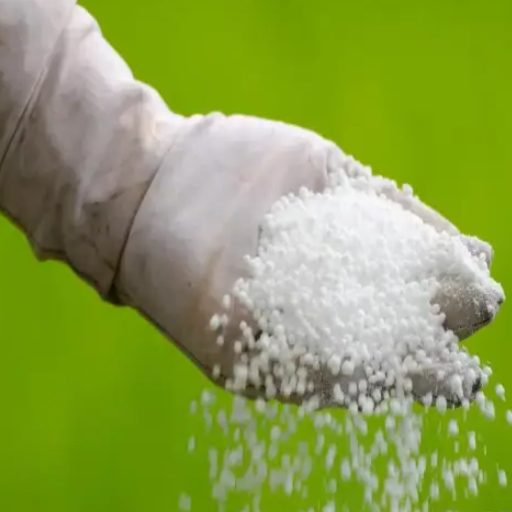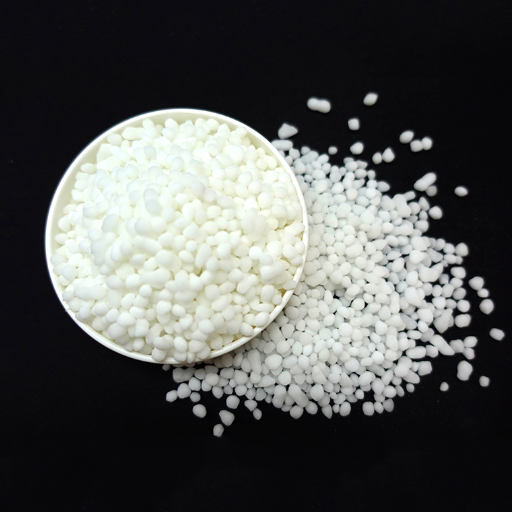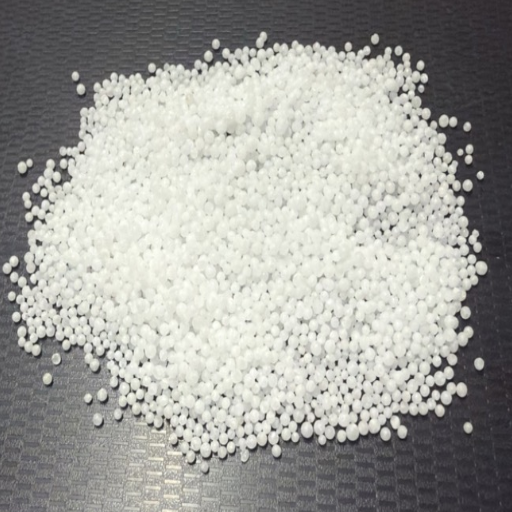The widespread use of urea fertilizer has long been a cornerstone of modern agriculture, prized for its affordability and high nitrogen content. However, as agricultural practices evolve and environmental concerns intensify, the drawbacks of urea are coming under increased scrutiny. This article explores the environmental consequences of urea fertilizer, including its role in greenhouse gas emissions, water contamination, and soil degradation. Additionally, we will examine viable alternatives that offer more sustainable options for farmers and ecosystems alike. By understanding these challenges and solutions, you can make informed decisions about the future of agricultural practices.
Understanding Urea Fertilizer
What is Urea Fertilizer?
Urea fertilizer is a nitrogenous compound with agricultural use on account of being a rich nitrogenous nutrient for plants. Urea is manufactured via the reaction of ammonia with carbon dioxide under high pressure, producing a water-soluble granule or pellet. Nitrogen is a vital nutrient to support the development of plant tissues and the synthesis of chlorophyll, and ultimately, well-fed crop yields.
The utmost preference for urea fertilizer is the speed of efficiency and affordability. Containing approximately 46% nitrogen by weight, it stands as the highest nitrogen fertilizer concentration available. This requirement forces the farmer to apply small amounts of urea to achieve fulfill yield potentials when compared to other nitrogenous sources. Furthermore, urea is highly adaptable, being broadcast or dissolved in water for foliar application.
Since the effectiveness of urea depends on the right application techniques and environmental backdrop, its efficacy is negatively influenced by these factors. Release of ammonia gases into the atmosphere occurs by the hydrolysis of urea if its incorporation into the soil is delayed. This process leads to nitrogen loss and air and water pollution. And so, to obtain the best results, one must control urea to reduce the volatilization and leaching processes, thus preserving all its benefits and preventing damage to the environment.
Common Uses of Urea in Agriculture
Being a high-N fertilizer, it finds major use in modern agriculture due to its lower cost and multipurpose nature. Nitrogen imparts higher crop production; therefore, it is known as a yield-generating chemical and a fertilizer that supports plant growth. Urea is mainly applied for supplying nitrogen to crops like wheat, maize, and rice for such vital metabolic activities as protein synthesis and photosynthesis, so that healthier, faster-growing crops with better productivity can be achieved.
Other major uses of urea are as a foliar spray when nitrogen is required as a quick shot during some stages of crop growth. In comparison to soil application of fertilizer, the leaf application of fertilizer enables a faster absorption of the nitrogen element through the leaves of plants. It comes in handy during the critical stages of growth, or when the soils delay the uptake. Urea is also optimally used in fertigation systems so that nitrogen is fairly and somewhat effectively distributed to the crops.
The other advantage, as it were, concerns the blending with other fertilizers. When combined with phosphates or potassium-based fertilizers, crop nutrition can be optimized for particular soil deficiencies or specific crop requirements. However, it is important that urea be applied appropriately, both in application method and time, to mitigate any environmental concerns, such as volatilization or leaching, and to retain its sustainability advantages for agriculture.
The Role of Urea in Nitrogen Supply
Urea contributes greatly to the supply of nitrogen, which is an essential nutrient for plant growth and development. World over, it is the most concentrated and highly present nitrogenous fertilizer with a 46% nitrogen content. The following are the five major points depicting the importance of urea in nitrogen supply:
- High Nutrient Efficiency: Urea bears nitrogen in a highly concentrated fashion and therefore delivers the nutrient to the crops more efficiently. Being highly soluble, it can be applied either when dry or in liquid fertilizer mixes.
- Cost-Effective Nitrogen Source: It is not only cheaper but is also more available than other nitrogen fertilizers such as ammonium nitrate or ammonium sulfate, which signifies its utility in large farming conglomerates.
- Flexibility of Application: Urea in a wide sense can be applied to soils, mixed with sprinkler irrigation water, or applied as a foliar feed. Thus, application methods can be chosen according to crop needs and environmental conditions.
- Role in Nitrogen Cycle in the Soil: Initially, after the application of urea, it is hydrolysed, and that product is converted to ammonium and further into nitrate, which is absorbed by the roots of the plants. This step is paramount to the nitrogen cycle so that nutrient availability is sustained.
- Compatibility with Crop-Specific Formulations: Urea can be easily incorporated into custom fertilizer formulations prepared for a particular crop and soil combination. With regard to combination with phosphate or potassium-based products, urea serves in synergy in balanced principles for plant nutrition.
Establishing well-balanced nitrogen fertilization by means of the use of urea-rich products through operational incorporation in soil and crop management practices will enable the agricultural systems to make the best nitrogen use while lessening the environmental problems.
Disadvantages of Urea Fertilizer

Environmental Impact of Urea Fertilizer
The application of urea fertilizer has become a needful one for crop yield improvement; however, with the benefits realized, come significant environmental challenges. One major issue is ammonical pollution created when ammonia is evolved from urea hydrolysis, which further combines to form particulate matter that is injurious to the health of humans. Improper applications of urea or its overapplication may also result in nitrogen leaching to the groundwater, raising nitrate levels, thereby threatening water quality and aquatic ecosystems.
Yet, there are the nitrous oxide (N₂O) emissions, another scenario generating a potent greenhouse gas. Soil microbial activities in nitrification, but also denitrification under favorable conditions, may produce huge amounts of N₂O. This adds another scenario of greenhouse gas emissions from agriculture, thereby aggravating climate change.
Best management practices (BMPs) are nowadays promoted by research to mitigate environmental impacts. These encompass precision fertilizer application, use of urease inhibitors, and integrated nutrient management systems to enhance nitrogen use efficiency and reduce emission levels. By improving agronomic techniques and synchronizing them with macro policies, agri-management can mitigate its adverse environmental impact, facilitating sustainable agricultural systems.
Greenhouse Gas Emissions from Urea Use
Urea is widely utilized as a nitrogen fertilizer, thus qualifying as an important contributor to greenhouse gas (GHG) emissions in agriculture. When this nitrogen fertilizer is applied to soil, it gets hydrolyzed by the enzyme urease into ammonium carbonate, releasing carbon dioxide (CO₂) in the process. Nitrate, conversely, is produced when nitrous gases are released through the process of nitrification from ammonium produced from urea, giving rise to this excellent greenhouse gas having 298 times the potential refinery compared to CO₂ over 100 years.
Direct N₂O emissions following urea application can vary between 0.3% and 1.5% of the nitrogen stocked, depending on soil type, moisture conditions, and practitioners’ choices. Indirect emissions can take place if nitrogen is lostalbeit ammonia volatilization and redeposited in other areas, or if nitrate leaks from the soil and undergoes denitrification. The presence of high temperatures also promotes emissions from urea due to the fact that warm conditions accelerate enzymatic activities involved in nitrogen transformations.
This concern is of paramount importance in the carbonization and marketing through land-use change processes, emission mitigation requiring most innovative agronomic approaches, such as the inclusion of urease and nitrification inhibitors for the temporal postposition of urea hydrolysis and nitrification processes this way withholding N₂O flux. Slow-release fertilizers coupled with nutrient mapping and field application techniques help obtain the best utility of nitrogen while minimizing emissions. Some groundbreaking enhancements related to enhanced efficiency fertilizers and real-time monitoring of soil conditions could reduce the environmental burden of urea-based fertilization, thus paving the path to climate-resilient agricultural systems.
Water Pollution and Contamination Risks
So much so, water pollution still poses a serious risk to ecosystems, public health, and agricultural productivity. The factors considered primary sources of water pollution are agricultural runoff, industrial effluents, and waste disposal systems. Runoffs created by agriculture often carry nitrates, phosphates, and pesticides that eutrophicate water bodies, creating disturbances for aquatic ecosystems and promoting the proliferation of harmful algal blooms. With nearly 80% of the wastewater outflows untreated into the environment across the globe, the situation leads the contamination in freshwater and marine environments.
The industrial sectors release toxic heavy metals, e.g., mercury, lead, and cadmium, along with pollutants like solvents and hydrocarbons that contribute heavily to the watering down of pollution. These substances remain in water bodies from where they tend to bioaccumulate in aquatic organisms. The potential health effects are long-term through the food chain. Moreover, few hazardous waste is disposed of in landfills illegally, while others are dumped illegally, hence posing a continued risk to groundwater resources, which brings away the very possibility of restoration of damage caused to aquifers.
Emerging contaminants, as pharmaceuticals and microplastics, pose still another threat to the assurance of water safety. Indeed, since their discovery by recent research, it has become clear that they exist in water systems all around the world, with nanoplastics and active pharmaceutical substances seeping into ecosystems at a rapid pace. Hence, there looms big-time urgency for advanced wastewater treatment technologies like membrane filtration and AOPs to reduce these threats.
Such pressing concerns must be addressed in a proactive manner with the development of strong monitoring systems together with strict regulatory compliance, as well as innovative water purification technologies. Water security may well be sustained if solutions are developed with respect to specific regional water problems, together with comprehensive awareness programs for the general population and industries themselves amid growing anthropogenic pressure.
Soil Degradation Linked to Urea Fertilizer

Nutrient Imbalances Caused by Prolonged Use
Urea fertilizers have been identified as a cause for nutrient imbalances for long periods of time. Soil health and productivity must be fundamentally altered in this scenario. Urea is used and applied mainly for nitrogen content, to grow crops fast and kill nutrients of secondary importance, like potassium, phosphorus, micronutrients such as zinc and iron. Imbalanced application of nitrogen fertilizers disturbs natural nutrient cycling mechanisms of soil microbiota, whereby these nutrients become deficient with time, and crops lose their resistance and consequently lose in yield.
Improved N applications speed up acidification processes and negatively influence the availability of vital macro- and micronutrients. Moreover, this process alters the cation-exchange capacity of soils and diminishes the soils’ ability to retain these elements. It was stressed in studies that when urea was applied continuously without any integrated nutrient management practices, leaching and runoff losses of mineral nutrients occurred to the greatest extent, especially under highly irrigated situations. Correcting such imbalances requires alternative fertilization strategies, including balanced mixtures of organic matter, micronutrient-enriched amendments, and crop rotation systems.
These challenges must be tackled with data-driven soil fertility management, soil testing-based modern science, precision agriculture techniques, and region-wise nutrient supplementation protocols. If these scientifically informed practices can be truly adopted on a full scale, then soil health may be restored in the long run, and the negative impacts of unregulated urea application may be counteracted.
Soil Acidification and Fertility Decline
This worsening of acidification in soils has always been peculiar to modern agriculture, mainly brought about by the massive use of acid-forming nitrogen fertilizers and unsustainable agrarian practices. The acidity in soils diminishes the availability to plants of those essentials like phosphorus, calcium, or magnesium, while it conversely increases the solubility and hence the availability of toxic elements such as aluminium, which adversely affects root growth and microbial activity. Extended acidic conditions can result in a deep loss of soil biodiversity and a reduction in fertilizing capacity.
Most soils show a decrease in pH from an accumulation of hydrogen ions released during nitrification and leaching. For example, in areas of intense cultivation, the pH value is considered to have dropped by 0.1 to 0.3 units per decade in the absence of lime application, which would have counteracted the acidifying process. Counteracting strategies would entail continuous monitoring of soil pH and applying agricultural lime or dolomite to alleviate acidity. The amount of lime to be applied should first be determined from a precise buffer pH test, for an adequate amount to be applied to avoid overcompensating soil conditions.
Tillage conservation, organic matter addition, and proper nutrient management could largely counteract the acidification trend. Selecting crop varieties tolerant of low-pH soils and developing microbial inoculants for pH stabilization are currently viable alternative approaches to halt the widespread decline in soil fertility caused by acidification.
Impacts on Soil Microorganisms
Soil acidification has every terrible implication for the microbial communities of the soil since the pH of a soil controls the diversity, constitution, and functions of the soil microorganisms. A downsloping drop of soil pH is a heavy environmental stress leading to disturbances in microbial processes that are essential for maintaining soil health and completing crop yields. Some five detailed effects of soil acidification for soil microorganisms are:
- Reduced Microbial Diversity: Low-pH soils favor acid-tolerant species to proliferate while inhibiting those that are sensitive to low pH levels. This decreases microbial diversity at large and limits the capability of silt to carry out various ecological processes.
- Decline in Nitrogen-Fixing Bacteria: Nitrogen-fixing bacteria of an acid-sensitive nature, such as Rhizobium, do not fare well in the low soil pH, thereby decreasing the availability of biologically fixed nitrogen, which is important for plant growth and soil fertility.
- Disruption of Microbial Enzyme Function: Soil acidification conditions hinder essential microbial enzymes from maintaining their structural stability or interfere with their functioning. Phosphatases, as one example of enzymes engaged in the decomposition of organic matter, show lower efficiency under acidic conditions.
- Imbalance in Fungal-to-Bacterial Ratios: Acidity in soils tends to favor fungi over bacteria, thereby shifting the fungal-to-bacterial ratio. Such an imbalance can perturb the dynamics of nutrient cycling and may result in the outbreak of pathogenic fungi.
- Reduction in Microbial Biomass: High h-ion concentration in acidic soils stresses microbial cells and shrinks microbial biomass, thus directly affecting carbon sequestration and nutrient mineralization processes of relevance to long-term soil health.
Quantitative studies have documented an approximate 30-40% decline in microbial biomass when soil pH is reduced below 5.0, showcasing the critical need to mitigate acidification to preserve active and diverse microbial populations.
Health Concerns Associated with Urea Fertilizer

Contamination of Drinking Water
Considered amongst the major concerns while applying urea fertilizer are nitrate leaching and drinking water contamination. The hydrolysis of urea takes place in the soil, forming ammonium and nitrate by nitrification. Nitrates, being quite soluble in water, can travel down to contaminate groundwater supplies, especially in areas where there is heavy rainfall or aggressive irrigation. A high level of nitrates in drinking water can be hazardous to health and cause methemoglobinemia or “blue baby syndrome,” which results in a lessening of the oxygen capacity of the blood of babies.
I believe that this problem requires tight management practices to be addressed. This includes regulating application rates to suit crop nitrogen requirements and avoiding application of fertilizers just before heavy rainfalls, which promote greater leaching. Furthermore, the use of buffer zones, cover crops, and enhanced-efficiency fertilizers can contribute greatly to minimizing nitrate migration to water courses and preserving human and environmental conditions.
Meanwhile, to fully protect against the risks, I also point out the need for some regular checks of nitrate concentrations in the groundwater of agricultural areas. Precision agricultural technologies are promising in providing solutions for better crop yields with less environmental impact. This is at the heart of meeting the nutritional requirements posed by modern agriculture while saving water resources at the same time.
Effects on Human Health
The use and abuse of urea fertilizers could threaten human health mainly through water contamination and through the consumption of agricultural products grown in conditions of excessive nitrate. Here are five important issues posed to human health, presented with explanations, descriptions, and their respective data:
- Methemoglobinemia (Baby Blue Syndrome): High levels of nitrate in drinking water are converted to nitrite in the body, which binds to hemoglobin and thus reduces its oxygen-carrying capacity.
- Thyroid Dysfunction: Prolonged exposure to increased nitrate amounts is thus regarded as inhibiting the normal functioning of the thyroid gland. Nitrate ions compete with iodine uptake and may cause goiter and hypothyroidism (International Journal of Environmental Research and Public Health).
- Cancer Risk: The formation of nitrosamines from nitrates has an increased rate of development of gastrointestinal cancers. These studies show that there is a strong relationship between the intake of nitrates from water and diet in their levels of association with esophageal and gastric cancers, the actual thresholds varying around the world.
- Effect on the Nervous System: Long-term nitrate exposure can cause nervous problems, such as headaches, dizziness, and in extreme cases, neural disorders. This condition is the result of altered oxygen transport and cellular metabolism with the increase of methemoglobin.
- Reproductive Issues: Increased nitrate exposure may also be associated with adverse reproductive outcomes such as preterm births, low birth weights, and congenital anomalies, thereby posing a great concern for the populations residing in agricultural areas with extensive use of synthetic fertilizers.
Systematic monitoring of nitrate levels in water and the creation of strict safety regulations governing the use of fertilizers are necessary steps to prevent harm from these serious health risks.
Alternatives to Urea Fertilizer

Organic Fertilizers as Sustainable Options
Organic fertilizers with origin from natural sources such as compost, manure, and plant residues stand out-eyed might be an alternative to synthetic fertilizers generated with urea. These fertilizers slowly release nutrients into the soil, improving its structure, increasing organic matter content, and creating a favorable environment for microbial activity. The microorganisms enhance the fertility of the soil over an extended period. It has been found that the use of organic fertilizers reduces the leaching of nitrates into water bodies and thus lessens contamination risks associated with their chemical counterparts.
Key nutrients in organic fertilizers, including nitrogen, phosphorus, and potassium, occur in forms that allow their release and absorption by plants in a gradual manner, which practically arrests nutrient runoff. For example, it is evident, from research, that fertilizers from manure work well in improving crop yield on par with the synthetic ones, provided they are well-applied, with additional benefits being carbon sequestration in soils, thus further assisting climate change mitigation.
Organic fertilizers may require higher initial labor for application and management, yet advancements in pelletizing organic materials have increased the efficiency of the method. If we combine the traditional approach with the modern one, organic fertilization would not only be a means to sustain crop productivity, but it would also serve the global sustainability aim of reducing pollutants from agriculture.
Comparison of NPK Fertilizers and Ammonium Sulfate
When ammonium sulfate is used, nitrogen and sulfur are targeted as nutrients for its fertilizing value, while NPK fertilizers furnish nitrogen, phosphorus, and potassium in potentially balanced quantities per the particular needs of crops.
|
Aspect |
Ammonium Sulfate |
NPK Fertilizers |
|---|---|---|
|
Components |
Nitrogen, Sulfur |
Nitrogen, Phosphorus, Potassium |
|
Dissolvability |
High |
Moderate to High |
|
Soil Effect |
Acidifies |
Neutral to Slightly Acidic |
|
Crop Type |
Sulfur-demanding |
General-purpose |
|
Expense |
Moderate |
Variable |
|
Usage |
Specific |
Versatile |
|
Eco Impact |
Low runoff |
Balanced supply |
Advanced Farming Practices to Minimize Urea Use
Excessive urea application in agriculture has been a concern affecting aspects such as soil health and environmental pollution, including the emission of greenhouse gases. Improved farming methods are thus considered an effective means to reduce the reliance on urea while sustaining crop yields. These approaches mainly focus on enhancing nutrient use efficiency and on precision agriculture technologies and sustainable nutrient sources.
A further approach in this respect is precision nutrient management. With GPS-based soil mapping and the use of sensors, fertilizers are applied variably, supplying nutrients only where and when crops require them, thus reducing waste as well as environmental runoff. With the inclusion of controlled-release fertilizers, an advanced option is made available when compared to conventional urea releases: being encapsulated and considered a nutrient source, it allows for nitrogen release to take place slowly according to the uptake of plants.
This is another crucial means. Biological nitrogen fixation methods include growing legumes in the field or inoculating the soil with nitrogen-fixing bacteria. This greatly augments nitrogen supply without the use of synthetic urea. Organic fertilizers such as compost or biochar can also be used to increase soil fertility and nitrogen retention ability through improved management of organic matter.
By limiting urea application, irrigation methods such as fertigation and drip irrigation also take a central role. Fertigation and drip irrigation can deliver nutrients to plant roots in amounts that are controlled, and the nutrient losses through leaching or volatilization are minimized by these methods. The incorporation of these practices with crop rotations and cover crops is an interesting scenario for fostering sustainable nutrient cycling and promoting soil health over the long term.
References
Frequently Asked Questions (FAQ)
Q: What are the main disadvantages of urea fertilizer?
A: The main disadvantages of urea fertilizer include the risk of nitrogen loss due to volatilization, which can significantly reduce its effectiveness. Additionally, urea can lead to soil acidification over time, negatively affecting soil health. The excessive use of urea may also contribute to eutrophication in nearby water bodies, promoting the excessive growth of algae.
Q: How does urea fertilizer affect soil acidity?
A: Urea fertilizer, when applied, can lead to soil acidification as it is converted into ammonia, which produces ammonium ions in the soil. This process can lower the pH of the soil over time, making it more acidic. Increased soil acidity can hinder the growth of certain crops and affect overall soil health.
Q: What is the chemical formula for urea?
A: The chemical formula for urea is CO(NH2)2. It is a simple organic compound that contains a high amount of nitrogen, making it a popular choice for fertilization. Urea’s high nitrogen content makes it readily available to plants, but its disadvantages must also be considered.
Q: What happens when urea is applied as fertilizer?
A: When urea fertilizer is applied, it is converted into ammonia and carbon dioxide. The ammonia produced can be readily absorbed by plants, providing them with essential nitrogen. However, if not used properly, this conversion can lead to nitrogen loss due to volatilization, which diminishes the fertilizer’s effectiveness.
Q: What is the risk of nitrogen loss associated with urea fertilizer?
A: The risk of nitrogen loss with urea fertilizer is high, particularly when it is not incorporated into the soil immediately after application. Nitrogen from urea can easily volatilize into the atmosphere as ammonia gas, leading to significant losses. This loss not only affects crop yield but also contributes to environmental issues.
Q: Can urea fertilizer cause fertilizer damage?
A: Yes, urea fertilizer can cause fertilizer damage if misapplied. Over-application or inadequate incorporation into the soil can lead to nitrogen loss and potential harm to plants. Furthermore, the resultant soil acidity from excessive urea can negatively impact soil health and crop productivity.
Q: How does the production of urea relate to its disadvantages?
A: The production of urea typically involves using natural gas as a feedstock, which makes it an inorganic compound. While urea has advantages due to its high nitrogen content, the environmental impact of its production and the associated disadvantages, such as soil acidification and risk of eutrophication, must be taken into account.
Q: What are the advantages and disadvantages of urea compared to other fertilizers?
A: Urea fertilizer has advantages due to its high nitrogen content, which is essential for plant growth. However, its disadvantages include potential nitrogen loss through volatilization, the risk of soil acidification, and the contribution to water pollution through eutrophication. When compared to other fertilizers, these factors must be weighed carefully in terms of overall effectiveness and environmental impact.
Q: What are the effects of urea on aquatic plants?
A: The excessive use of urea fertilizer can lead to nutrient runoff into water bodies, resulting in eutrophication. This process causes an overgrowth of aquatic plants, particularly algae, which can deplete oxygen levels in the water and harm fish and other aquatic life. Thus, careful management of urea fertilizer is crucial to mitigate these environmental effects.







